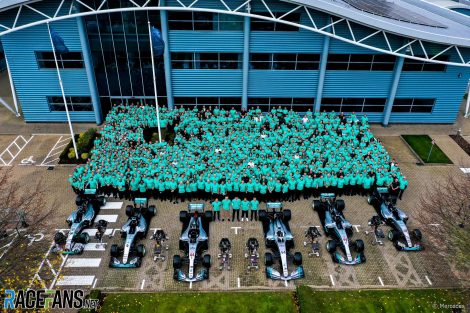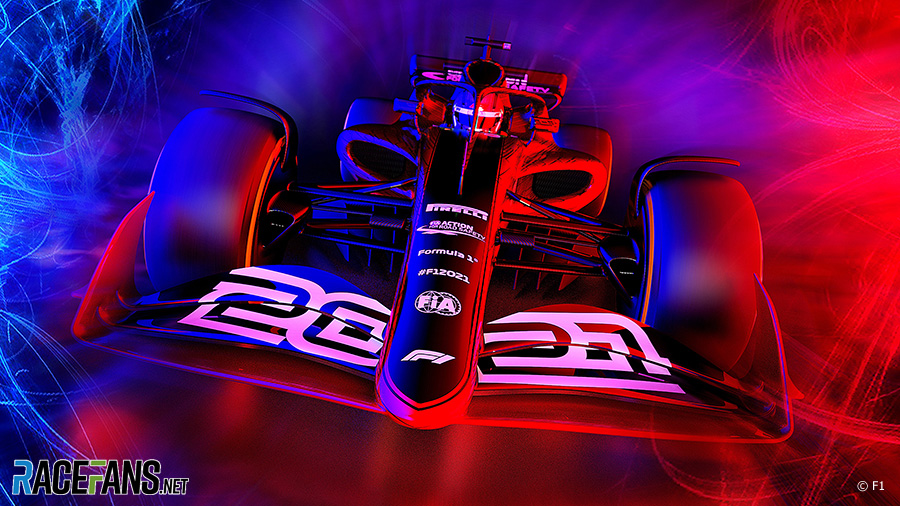Is the drastic new rules package for the 2021 F1 season the beast compromise the sport could have struck with the teams?
This is an extremely difficult – if not impossible – question to answer. It’s important to first understand the magnitude of the challenge and task facing the FIA and, secondarily, F1’s commercial’s rights holder Liberty Media in framing the new regulations.As with race car set-ups, achieving the best regulatory balance is a process of juggling various compromises. However, compromises are only made once all relevant factors have been analysed – again, much like a car set-up.
Before that staged is reached, the regulators should ask themselves two crucial questions: “Does the sport at all need a new set of regulations?”; then, assuming it does: “What is F1 trying to achieve with its new regulations?”. At times in the not-so-distant past there have been changes simply for the sake of change (or some politicking or other), or so it seemed.
This time, there is no doubt that change is urgently required. A quick perusal of the victory roll since the current V6 hybrid turbo engine regulations were introduced in 2014 shows the subsequent 120 races have been won by three teams: Mercedes, Ferrari or Red Bull. Just 16 different drivers have finished in the 360 podium places available in that time – a number which stood at just 14 before Pierre Gasly and Carlos Sainz Jnr’s breakthroughs at the last round.
The reason is not hard to find: The ‘big three’ teams are paid enormous annual bonuses simply to turn up, so simply outspend the rest.
Thus the main imperative facing the regulators was one of levelling the financial playing field, to be achieved through the introduction of financial regulations (AKA a budget cap). But that the limit needed to be suitably generous so as not to alienate the big three who could, of course, choose to exit F1, and remain yet to formally commit to the sport. Don’t underestimate the impact their departure would have, particularly if the likes of Mercedes or Ferrari took their engine supplies with them.
Advert | Become a RaceFans supporter and
Equally, the spending level needs to be low enough to ensure the survival of the five independents teams – McLaren, Haas, Racing Point, Sauber and Williams – plus retain the ongoing commitment of manufacturer Renault and Red Bull junior squad Toro Rosso.

The reduction in spending will be achieved partly through changes to the rules on the production of car parts. Today’s regulations provide for two parts categories – ‘listed parts’, which teams must hold design rights to, and ‘unlisted parts’ which may be sourced elsewhere.
The 2021 regulations increases the number of categories to five. They are Listed (as above), Standard (provided to all teams by a single supplier, which is chosen via tender), Prescribed Design (free supply to a single design specification) Transferable (may be shared between teams), and Open Source (teams must share their designs).
Reducing the financial imbalance between the teams was just one goal of the regulations. Another was to improve the quality of racing, but do so while maintaining the sport’s integrity as a car development championship and despite some teams’ budgets being cut by up to 50 per cent.
Advert | Become a RaceFans supporter and
The FIA and F1 identified reduced ‘following car distances’ (FCD) as being crucial to overtaking. For 2021 F1’s revamped aerodynamic regulations will reduce the ‘dirty air’ generated by the wake of the car ahead.

Also under scrutiny were the sporting regulations, at this stage, though, little changed from what went before. True, weekend formats will likely change, but not so much that fans will notice a significant difference, aside that the Thursday pit lane ‘walkabouts’ may be affected. Further sporting changes are likely to be introduced at later dates once the effects of the revised technical changes is known.
I’m sure a number of clarifications and amendments will be issued both before 2021 and thereafter as the regulations bed in, and the acid test of whether (or not) the best possible compromises were achieved by the regulators can only be gauged after 2021. But of one thing I am absolutely certain: The FIA and F1 have, with the co-operation of the teams, given it their best shots.
That is the best that could be expected from them.
[dietersinbox]
Go ad-free for just £1 per month
>> Find out more and sign up





Phylyp (@phylyp)
22nd November 2019, 13:16
When the wrangling was going on between Liberty and the teams, I wasn’t very hopeful of a good and positive outcome? But since the regs were signed off and published a few weeks ago, I feel much more positive about it. Will it succeed (both financial regs, and aero changes)? I don’t know, but it seems – much as Dieter says – this is the best concerted effort to fix these issues.
So, well done to Liberty, and specifically Brawn and his team, for getting these in place. Let’s hope they have the desired outcome.
Aussie Rod (@aussierod)
23rd November 2019, 1:52
+1 well said
Robbie (@robbie)
24th November 2019, 14:49
I have been optimistic from the getgo and am thrilled that they are genuinely/officially heading in the right direction with several aspects of F1 that needed addressing. I cannot see how these changes won’t go a long way to improving the product on the track and the sustainability of the sport. What a great new way to jump off from and continue the work in progress that F1 will always be. Such highly exciting times after at least a few decades of changes being needed, and oh how the changes have come. Really quite something.
Steve (@)
22nd November 2019, 13:34
The cars are really disappointing, compromise things that achieve little in the way of making F1 look like it belongs in the mid 21st Century. Maybe the racing will be better lets see. Quite why the FIA cant introduce a simple rule which ‘bans any aerodynamic device forward or rearward of the wheel centres when viewed in side profile’…..lets see what happens if F1 goes ground effect and chassis again, so long as there are wings there will be no overtaking and the carse will look like they did in the 80s, 90s, 00s and 10s.
bookgrub (@bookgrub)
24th November 2019, 8:43
Thanks for the definitive word Steve. Perhaps you can forward your aerodynamic studies to the FIA to help them adjust the rules? I’m sure they’d be ever so grateful.
Jere (@jerejj)
22nd November 2019, 15:52
”A quick perusal of the victory roll since the current V6 hybrid turbo engine regulations were introduced in 2014 shows the subsequent 120 races have been won by three teams: Mercedes, Ferrari or Red Bull.”
– And overall, this streak stretches back to the beginning of the last V8-era season, round 2 in Malaysia. The preceding season-opener won by Kimi for the current-Renault predecessor Lotus is the most recent race won by a team other than the Mercedes/Ferrari/RBR-trio. The subsequent streak now stands at 138 races and is probably going to keep on extending till at least the 2020 Abu Dhabi GP.
Jay
22nd November 2019, 18:15
Engineers will complain about limited opportunities to exploit already limited technical regulations.
Drivers will complain about less challenging slower and heavier cars.
Fans will complain about contrived tyre regulations to create racing.
Good luck F1. The end is near.
Stephen Crowsen (@drycrust)
22nd November 2019, 18:29
The proposed Budget Cap sounds very encouraging for the future of F1. While last week’s race result was great for F1, the sad part about it is it isn’t expected at Yas Marina, nor for any of the races next season. I’m expecting something better for 2021.
One thing I had noticed was the recent use of the phrase “punching a hole in the air” by the race commentators. I don’t recall hearing that phrase until this year, but now it seems to crop up regularly. At the start of this season I was sceptical about how successful the new “aero” rules would be, but the use of that phrase is because of the change in drivers’ strategies (e.g. Qualifying at Monza), which were brought about by the new rules. The drivers have discovered they can follow closer to the car in front and benefit a mistake by the driver in front or (rightly or wrongly) from DRS assistance, so it sounds promising for the 2021 rules.
Something else that needs to be addressed is the heat coming off a car, which is affecting a competitor following closely. I’m not sure how this should be addressed, but these cars are the most efficient in terms of extracting performance from the burning of fuel, meaning the heat dissipated should be less than it would otherwise be. I don’t know if I should say “Hopefully this will be addressed in the next power unit format” because to address that could be expensive if using “95 Octane” petrol. I wouldn’t be surprised if there are less expensive ways to address the heat problem, e.g. maybe allowing teams to trade off fuel tank capacity for larger batteries on a weight for weight basis.
AlexS
22nd November 2019, 20:13
Ridiculous. The absurdly expensive PU will continue, too good tires and now with ground effects the cars will be even more too perfect. I just hope that indeed they can follow closer but the past years “management” by the FIA have been always duds.
And once again the only organization that does not see its budget slashed is the FIA, the one where bureaucracy grows every year.
RB13
25th November 2019, 13:25
Bore off. It’s a clear move in the right direction headed by an actual technical director and legend of the sport, not a couple of freelance aerodynamacists cobbling together a workaround i.e OWG
People like you just want to moan for the sake of moaning.